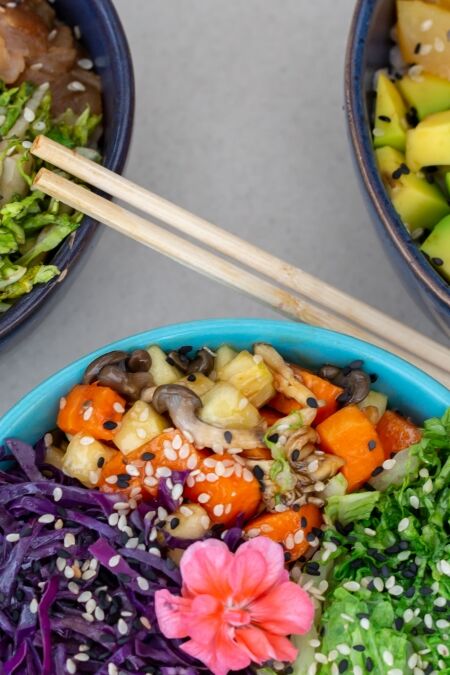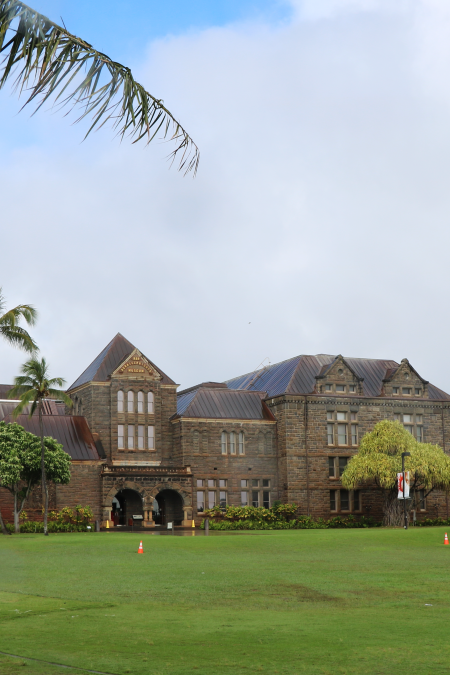In the heart of Puʻunēnē, Maui, just minutes from Kahului Airport, the Alexander & Baldwin Sugar Museum offers a fascinating glimpse into Hawaii’s sugarcane industry and its pivotal role in shaping the island’s history. Housed in a historic plantation home, the museum brings to life the stories of plantation workers, the evolution of sugar production, and its lasting cultural and economic impact. This guide will help you plan your visit, providing insights into the museum’s exhibits, history, and nearby attractions.
Highlights
- With six distinct exhibit rooms, including the Geography Room, Mill Room, and Plantation Room, visitors can explore various aspects of sugar production and plantation life through artifacts, photographs, and interactive displays.
- The Mill Room features a working model of a sugar cane crushing machine and other interactive exhibits that engage visitors in the sugar production process, enhancing their understanding of this historical industry.
- The museum grounds are home to impressive outdoor exhibits showcasing vintage plantation equipment, such as an 1898 Nordberg steam engine and a 1920s Portuguese oven.
- The museum highlights the multicultural workforce that contributed to the sugar industry, featuring artifacts and documents that reflect the diverse backgrounds of laborers who shaped Maui’s plantation communities.
- Browse a selection of unique souvenirs in the museum’s gift shop, including Hawaiian-inspired books, specialty sugars, and locally sourced coffee.
History
Founding and Early History
The Alexander & Baldwin Sugar Museum commemorates the legacy of Samuel Thomas Alexander and Henry Perrine Baldwin, who co-founded the Alexander & Baldwin Company. Pioneers in Hawaii’s sugar industry played a critical role in establishing sugar plantations that transformed the islands’ economy. While sugarcane was introduced to Hawaii centuries earlier, its large-scale production flourished in the 1800s, making Maui a key hub for the industry.
Rise of the Sugar Industry
Alexander & Baldwin leveraged Hawaii’s favorable climate to make the sugarcane industry globally competitive, rivaling nations like Brazil and India. Their innovative irrigation systems revolutionized farming, boosting production. The industry’s growth led to a diverse workforce as immigrants from around the world settled in Maui, shaping the island’s cultural and demographic landscape.
Founding of the Museum
The Alexander & Baldwin Sugar Museum, established in a restored 1902 plantation home, preserves the legacy of Hawaii’s sugar industry. Its exhibits educate visitors about the industry’s processes, from cultivation to milling, and highlight the experiences of plantation workers. The museum serves as a window into an era that defined Hawaii’s economic and social development.
Enduring Legacy
Although Maui’s last sugar plantation closed in 2016, the museum continues to preserve the history of this pivotal industry. It not only highlights the economic impact of sugar production but also honors the multicultural communities that grew around it, offering visitors a profound connection to Maui’s past.
A Living Tribute
The Alexander & Baldwin Sugar Museum stands as a tribute to Maui’s agricultural heritage. Through engaging exhibits and stories, it sheds light on the challenges and triumphs of Hawaii’s sugar industry, providing a meaningful historical experience for all who visit.
Exhibits and Visitor Experience
Geography/Water Room
This exhibit explores how Maui’s geography and weather patterns influenced the development of the sugar industry. It includes information about the extensive irrigation system, a network of tunnels, and wells developed by the plantations, highlighting the bravery of the men who accomplished this tremendous feat.
Founder's Room
This exhibit details the partnership between Samuel T. Alexander and Henry P. Baldwin, showcasing their contributions to the sugar industry and their innovative irrigation projects that supported plantation agriculture.
Immigration Room
The exhibits in this room reflect the different ethnic groups that traveled to Hawaii in response to the labor needs of the sugar industry. Displays include artifacts, photos, and documents—including labor contracts written in Hawaiian, Japanese, and Chinese.
Plantation Life Room
Includes photos and fascinating exhibits portraying the multi-ethnic nature of plantation communities. Household artifacts, religious items, and a scale model of a worker’s camp house provide a well-rounded look at plantation life.
Field Work Room
Provides an in-depth look at plantation workers in the fields through displays of surveying equipment, a cane knife, and a “kau kau tin” (lunch pail). In addition, a mannequin shows a Japanese woman’s complete fieldwork outfit.
Mill Room
Offers several interactive displays, including a working scale model of cane-crushing machinery driven by a Corliss steam engine. A narrative with special lighting and sound effects accompanies the operation of the model.
Outdoor Exhibits
Visitors can get a close-up look at some of the intriguing equipment and items used by the sugar plantation and the plantation workers. The equipment on display includes an 1898 Nordberg steam engine, a Cleveland Model J36 trench digger, a 1920s outdoor Portuguese oven, an 11-foot diameter Bull Gear, vintage Caterpillar tractors, and a cane hauler, among other items.
Visiting Information
Conveniently situated just 10 minutes from Kahului Airport, the Alexander & Baldwin Sugar Museum is at 3957 Hansen Road in Puʻunēnē. Admission is affordable, with tickets priced at $7 for adults, $5 for seniors, and $2 for children aged 6–12, while children under five enjoy free entry. Visitors must make reservations in advance, which can be easily booked online through the museum’s official website. The museum welcomes guests Monday through Thursday from 10:00 AM to 2:00 PM, with the last entry at 1:00 PM.
Tips for Visiting
- Book in Advance: Reservations are required and can be made easily online through the museum’s official website.
- Visit Early: Arrive early to make the most of your visit and avoid the last-minute rush before the final admission at 1:00 PM.
- Bring Comfortable Shoes: The museum includes indoor and outdoor exhibits, so comfortable footwear is recommended.
- Check for Accessibility: The museum provides facilities for visitors with mobility needs; inquire beforehand for specific accommodations.
- Photography Tips: Bring your camera to capture the fascinating outdoor exhibits and historic machinery.
- Family-Friendly Activities: Perfect for kids, especially with interactive exhibits in the Mill Room and affordable ticket prices for families.
- Weather Considerations: If visiting outdoor exhibits, check the weather forecast and bring sunscreen or rain gear if needed.
- Follow Museum Policies: Respect the museum rules, including any guidelines for handling artifacts or taking photos indoors.
Best Times to Visit
The best time to visit the Alexander & Baldwin Sugar Museum is in the morning, when it opens at 10:00 AM. Arriving early allows you to explore the exhibits at a relaxed pace and avoid the midday heat, especially if you plan to enjoy the outdoor displays. Weekdays are ideal for smaller crowds, as the museum operates Monday through Thursday. Plan your visit during Maui’s dry season (April to October) for the most pleasant weather, particularly if you’re combining your trip with nearby outdoor attractions.
Nearby Attractions
After exploring the Alexander & Baldwin Sugar Museum, visitors can enjoy several nearby attractions in Puʻunēnē and Kahului. Discover native Hawaiian plants and cultural displays at Maui Nui Botanical Gardens, or unwind by the ocean at Kanaha Beach Park, known for its tranquil waters and windsurfing opportunities. For a bite to eat, Kahului offers a variety of dining options, including local favorites serving Hawaiian plate lunches, fresh seafood, and international cuisine, all just a short drive from the museum.
Frequently Asked Questions (FAQs)
The museum is located at 3957 Hansen Road, Puunene, Maui, just 10 minutes from Kahului Airport, adjacent to Hawaii’s largest working sugar factory.
Admission costs $7 for adults, $5 for seniors, and $2 for children aged 6-12; children under five enter free.
Yes, reservations are currently required and can be made online through the museum’s official website.
Visitors can explore various exhibits, including a working model of a sugar mill, vintage machinery, photographs, and artifacts that reflect plantation life and the history of sugar production.
The museum operates Monday to Thursday from 10 AM to 2 PM, with last admissions at 1 PM; it’s advisable to check their website for any updates on hours.
Yes, there is parking available for visitors at the Alexander & Baldwin Sugar Museum.
How to Get There
By Car
To reach the Alexander & Baldwin Sugar Museum by car, start by heading towards Maui’s major highway, HI-30 (Honoapi’ilani Highway) or HI-380 (Dairy Road), depending on your starting location. From Kahului, take Puunene Avenue (HI-311) and continue straight for about 6 miles. The museum is located at 3957 Hansen Road in Puunene, and there is a dedicated parking area for visitors adjacent to the museum. Look out for clear signage as you get closer to the destination.
By Bus
Traveling to the Alexander & Baldwin Sugar Museum by bus is also a convenient option. Maui’s public transportation system, The Maui Bus, operates several routes across the island. From Kahului, take the bus line heading towards Kihei. Request a stop at Puunene or Hansen Road, depending on the specific route. From the stop, the museum is just a short walk away. It is advisable to check the latest Maui Bus schedules for updated route information and timings before your trip.
Get the Scoop on Hawaii’s Sweetest History Spot
A visit to the Alexander & Baldwin Sugar Museum isn’t just a walk through history—it’s a deep dive into the roots of Hawaii’s industrial legacy. This captivating museum tells the story of sugarcane’s role in shaping Maui’s culture, economy, and communities. By including this unique destination in your itinerary, you’ll gain a richer understanding of the island’s past while creating sweet memories for your adventure in paradise.




